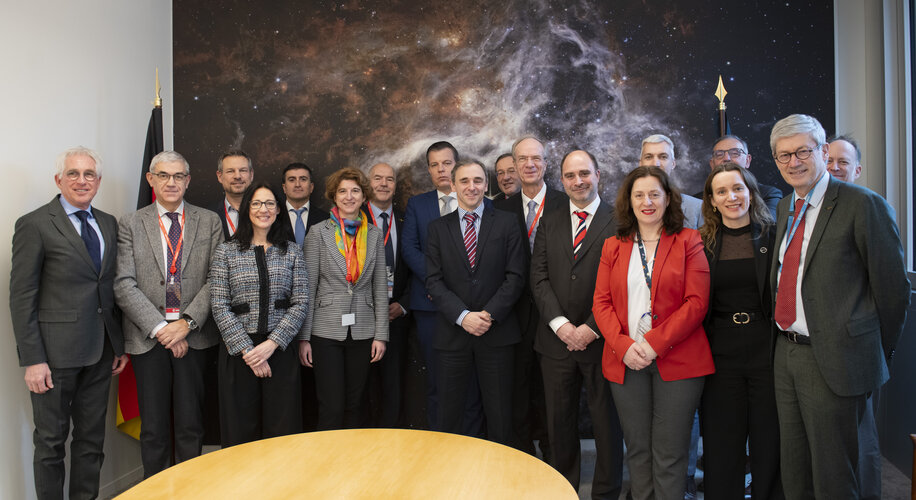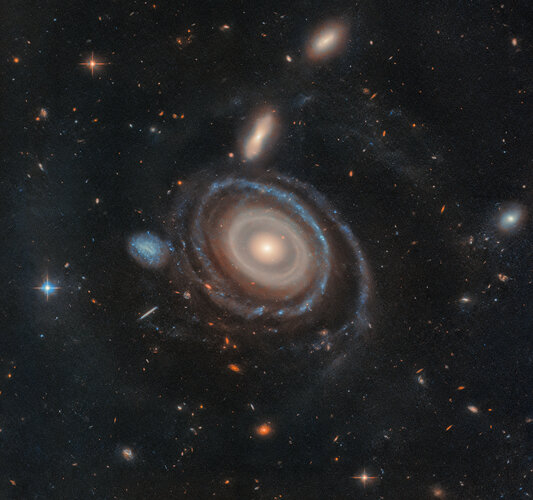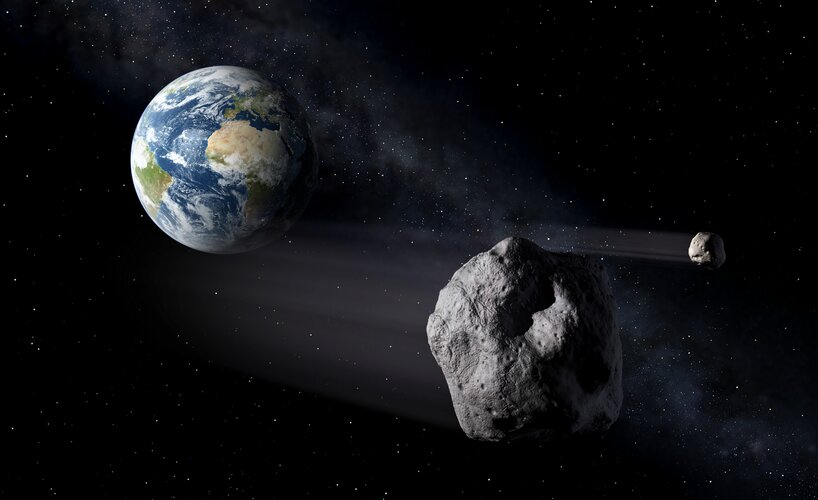By studying neutron 'starquakes', scientists aim to revolutionize nuclear matter research
Sunday, 09 February 2025 09:55 A new study led by the University of Bath suggests that investigating 'starquakes'-seismic activity in neutron stars-could unlock profound insights into the properties of nuclear matter. These findings have the potential to reshape current methodologies in nuclear physics and astronomy, with possible long-term applications in health, security, and energy.
The research, conducted by an inte
A new study led by the University of Bath suggests that investigating 'starquakes'-seismic activity in neutron stars-could unlock profound insights into the properties of nuclear matter. These findings have the potential to reshape current methodologies in nuclear physics and astronomy, with possible long-term applications in health, security, and energy.
The research, conducted by an inte Lightning strikes link weather on Earth and weather in space
Sunday, 09 February 2025 09:55 There are trillions of charged particles - protons and electrons, the basic building blocks of matter - whizzing around above your head at any given time. These high-energy particles, which can travel at close to the speed of light, typically remain thousands of kilometers away from Earth, trapped there by the shape of Earth's magnetic field.
Occasionally, though, an event happens that can
There are trillions of charged particles - protons and electrons, the basic building blocks of matter - whizzing around above your head at any given time. These high-energy particles, which can travel at close to the speed of light, typically remain thousands of kilometers away from Earth, trapped there by the shape of Earth's magnetic field.
Occasionally, though, an event happens that can NASA CubeSat Finds New Radiation Belts After May 2024 Solar Storm
Sunday, 09 February 2025 09:55 The discovery of the new belts, made possible by NASA's Colorado Inner Radiation Belt Experiment (CIRBE) satellite and published Feb. 6, 2025, in the Journal of Geophysical Research: Space Physics, is particularly important for protecting spacecraft launching into geostationary orbits, since they travel through the Van Allen Belts several times before reaching their final orbit.
Temporary
The discovery of the new belts, made possible by NASA's Colorado Inner Radiation Belt Experiment (CIRBE) satellite and published Feb. 6, 2025, in the Journal of Geophysical Research: Space Physics, is particularly important for protecting spacecraft launching into geostationary orbits, since they travel through the Van Allen Belts several times before reaching their final orbit.
Temporary One in Four Chance Annually of Rocket Debris Entering High-Traffic Airspace
Sunday, 09 February 2025 09:55 A new study from the University of British Columbia (UBC) has found that there is a 26 percent chance each year that debris from space rockets will re-enter Earth's atmosphere and pass through an area of high air traffic density.
Although the probability of such debris striking an aircraft remains low, the findings underscore the growing risk of space junk disrupting flights and imposing f
A new study from the University of British Columbia (UBC) has found that there is a 26 percent chance each year that debris from space rockets will re-enter Earth's atmosphere and pass through an area of high air traffic density.
Although the probability of such debris striking an aircraft remains low, the findings underscore the growing risk of space junk disrupting flights and imposing f Call for information on low Earth orbit navigation
Friday, 07 February 2025 14:39
The European Space Agency (ESA) is issuing a Request for Information (RFI) via OSIP for European industry to show interest and provide information on satellite technology that could enable the proposed next phase of ESA's LEO-PNT (Low Earth Orbit Positioning Navigation and Timing) programme, focused on industrialisation and in-orbit validation. ESA is looking to learn about production capability of payload building blocks and suitable off-the-shelf satellite platforms to accommodate them.
ESA to develop optical technology for navigation
Friday, 07 February 2025 14:29
Optical technology has the potential to revolutionise the field of positioning, navigation and timing. To drive the development of this technology, ESA has signed a contract with a consortium of European companies that will conduct a definition study (Phase A/B1) and associated critical technology predevelopment.
This is the first step toward a potential in-orbit demonstrator for optical time synchronisation and ranging (OpSTAR) that will be proposed at the ESA Council at Ministerial Level in November 2025, to validate intersatellite optical links before future use in operational satellite navigation systems.
Space weather station
Friday, 07 February 2025 13:20 Video:
00:00:46
Video:
00:00:46
Over the course of a whole day, Norway’s plasma sampler, the multi-Needle Langmuir Probe (m-NLP), is seen being slowly moved around by a robotic arm to be slotted into place on the outside porch of Bartolomeo – the Airbus-operated platform attached to the Columbus laboratory of the International Space Station (ISS).
Since its integration on Bartolomeo in September 2023, the task of this instrument has been to sample its immediate space weather environment by measuring the plasma surrounding the ISS. It does so to an extraordinarily high level of detail, making a few thousand measurements per second.
Plasma, sometimes
Week in images: 03-07 February 2025
Friday, 07 February 2025 13:10
Week in images: 03-07 February 2025
Discover our week through the lens
Earth from Space: Snow-capped Swiss Alps
Friday, 07 February 2025 08:00 Image:
The ranges and valleys of the Swiss Alps stand out in this image captured by the Copernicus Sentinel-2 mission in December 2024.
Image:
The ranges and valleys of the Swiss Alps stand out in this image captured by the Copernicus Sentinel-2 mission in December 2024. ESA endorses Year of Asteroid Awareness and Planetary Defence
Friday, 07 February 2025 08:00
The European Space Agency (ESA) has endorsed the United Nations' (UN) designation of 2029 as the International Year of Asteroid Awareness and Planetary Defence.
The initiative will foster international collaboration in the field of planetary defence and educate the public on the risks and opportunities associated with near-Earth asteroids.
Die Erde aus dem Weltraum: Schneebedeckte Schweizer Alpen
Friday, 07 February 2025 08:00 Image:
Die Bergketten und Täler der Schweizer Alpen sind auf diesem Bild zu sehen, das die Copernicus Sentinel-2 Mission im Dezember 2024 aufgenommen hat.
Image:
Die Bergketten und Täler der Schweizer Alpen sind auf diesem Bild zu sehen, das die Copernicus Sentinel-2 Mission im Dezember 2024 aufgenommen hat. Ariane 6 to deliver inaugural Galileo 2nd Gen satellites as European industry backs Arianespace
Thursday, 06 February 2025 09:37 Arianespace has confirmed at the 17th European Space Conference the signing of a launch services agreement with the European Commission and the European Union Agency for the Space Programme (EUSPA). Under this contract, Ariane 6 will deploy the first pair of second-generation Galileo navigation satellites (L17). Each satellite, weighing between 2,200 kg and 2,400 kg and outfitted with electrical
Arianespace has confirmed at the 17th European Space Conference the signing of a launch services agreement with the European Commission and the European Union Agency for the Space Programme (EUSPA). Under this contract, Ariane 6 will deploy the first pair of second-generation Galileo navigation satellites (L17). Each satellite, weighing between 2,200 kg and 2,400 kg and outfitted with electrical Momentus to conduct multi sensor rendezvous trial with US Air Force
Thursday, 06 February 2025 09:37 Momentus Inc. (NASDAQ: MNTS), a US-based commercial space provider that develops satellite buses, technology, and in-space transport solutions, announced that AFWERX, part of the U.S. Air Force Research Laboratory (AFRL), has chosen a Momentus proposal to test low-cost multispectral sensors for Rendezvous and Proximity Operations (RPO).
AFWERX serves as the Air Force's innovation hub and l
Momentus Inc. (NASDAQ: MNTS), a US-based commercial space provider that develops satellite buses, technology, and in-space transport solutions, announced that AFWERX, part of the U.S. Air Force Research Laboratory (AFRL), has chosen a Momentus proposal to test low-cost multispectral sensors for Rendezvous and Proximity Operations (RPO).
AFWERX serves as the Air Force's innovation hub and l Blue Origin mission simulates moon gravity
Thursday, 06 February 2025 09:37 Blue Origin's New Shepard rocket and spacecraft completed its moon-gravity mission, but the capsule appeared to have a slight hiccup on its return when one of its parachutes did not open entirely on Tuesday.
NS-29 took off from Blue Origin Launch One site in Culberson County, Texas, near El Paso, at about 11 a.m. on Tuesday. The reusable booster rocket made a vertical touchdown on a lau
Blue Origin's New Shepard rocket and spacecraft completed its moon-gravity mission, but the capsule appeared to have a slight hiccup on its return when one of its parachutes did not open entirely on Tuesday.
NS-29 took off from Blue Origin Launch One site in Culberson County, Texas, near El Paso, at about 11 a.m. on Tuesday. The reusable booster rocket made a vertical touchdown on a lau Alloy discovered that barely changes with temperature
Thursday, 06 February 2025 09:37 Most metals tend to lengthen as temperatures climb. The Eiffel Tower, for instance, can stand roughly 10 to 15 centimeters taller in summer than in winter because of this thermal expansion. While such elongation is a normal phenomenon in metals, it poses challenges in precision applications, prompting researchers to look for substances that remain dimensionally stable under heat. One well-known
Most metals tend to lengthen as temperatures climb. The Eiffel Tower, for instance, can stand roughly 10 to 15 centimeters taller in summer than in winter because of this thermal expansion. While such elongation is a normal phenomenon in metals, it poses challenges in precision applications, prompting researchers to look for substances that remain dimensionally stable under heat. One well-known 
